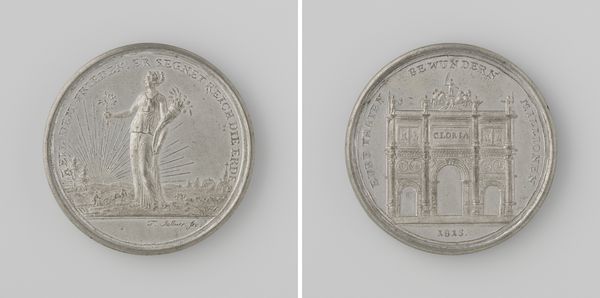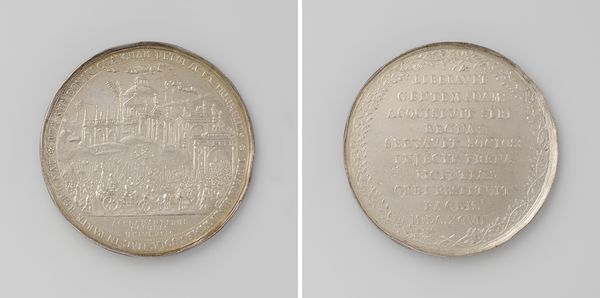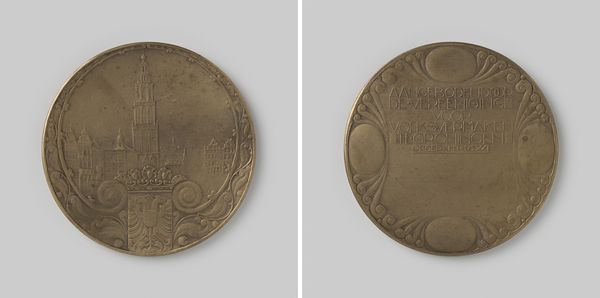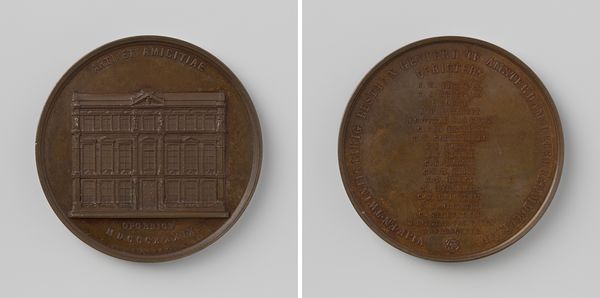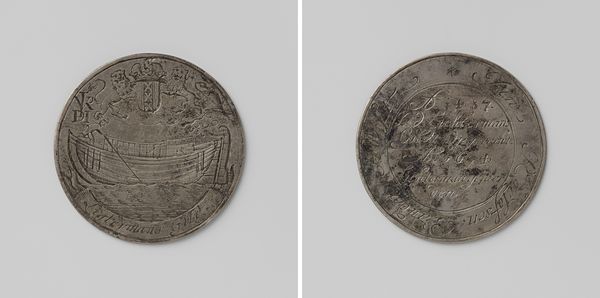
metal, relief, sculpture, engraving
#
neoclacissism
#
metal
#
relief
#
sculptural image
#
sculpture
#
embossed
#
engraving
Dimensions: diameter 5.8 cm, weight 59.84 gr
Copyright: Rijks Museum: Open Domain
Editor: This medal commemorates the founding of Arti et Amicitiae in Amsterdam, dating back to 1839. I am intrigued by how a building is portrayed on such a small, metallic surface, looking very detailed. How would you interpret this piece? Curator: The architectural form isn’t merely a depiction of a building, it's a carefully considered statement on cultural identity and aspirations, presented in Neoclassical style, connoting ideals like order, reason, and civic virtue. I wonder how the founders of "Arti et Amicitiae" viewed their role in shaping Amsterdam's cultural landscape. Do you feel it invokes the feeling of cultural memory? Editor: Definitely. Using metal, especially in medal form, evokes the feeling of timelessness and importance. Were medals commonly used to honor these types of establishments? Curator: Absolutely. Medals function as lasting testaments and symbolic markers in history, preserving cultural memory beyond their immediate context. Note the inscription 'Arti et Amicitiae’ which translates to ‘Art and Friendship.’ Editor: The choice of Latin lends the organization even more historical weight. It sounds like they aimed to connect to a long legacy. I see now how this piece speaks of an idealized cultural moment. Curator: Precisely. The building becomes a symbol laden with aspirations of an era. What would you say this has taught you about iconography? Editor: It taught me that it's about layers of symbolic communication – from architectural styles to materials – encoding memory. Thank you for illuminating the history of the work. Curator: Likewise; examining these objects lets us glimpse a world through symbol.
Comments
No comments
Be the first to comment and join the conversation on the ultimate creative platform.
